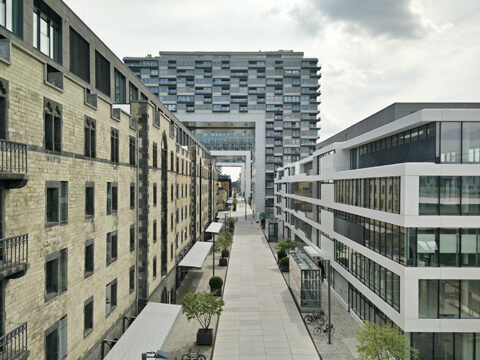
Let us explore different types of structures in Commercial Real Estate, and how they can be defined:
Office
Office buildings are classified into one of three classes: Class A, B or C depending upon their quality and location. Class A office buildings are considered the best quality construction and in a desirable location. The later Class B may have some of the attributes of Class A, but might be an older building or less than ideal location. Lastly, Class C office buildings is the lowest quality and can be poorly constructed or in a poor area.
Central Business District (CBD) – office buildings that are located in the heart of the city are considered to be in the central business district. While always present in large cities like New York or Chicago, they can also be found in downtown areas in medium cities like Denver or Seattle.
Suburban office buildings – suburban office parks can be found in nearly every city in America and are typically mid-rise structures with 80,000 to 400,000 square feet. These structures house numerous businesses and have a more campus like appearance.
Industrial
Industrial structures include manufacturing and warehouse facilities.
Heavy manufacturing – These are large structures designed for heavy manufacturing as the name implies. They have significant customization with machinery and require renovation to re-purpose for another tenant.
Light Assembly – These are structures with less customization and can be more easily reconfigured for new tenants. Light assembly structures are used for fulfillment, product assembly and storage.
Flex Warehouse – This versatile space has become more popular as it provides a mixture of office space and storage space. Flex warehouse is perfect for growing businesses that don’t want to lease multiple spaces for their operations.
Bulk Warehouse – These are very large structures, typically 50,000 sq. ft. or more that are used by regional distribution companies. They are typically located near highways, freeways and ports of entry.
Retail
While most consumers only think about their local shopping mall, retail structures include strip centers, community retail centers, power centers and regional malls.
Strip Center – These smaller structures are in local locations, typically suburb areas with small retail stores like dry cleaners, nail salons, pizza chains and others.
Community Retail Center – These are larger retail structures with 150,000 to 350,000 sq. ft. There are commonly grocery stores as the primary anchor occupying the space. There are often multiple restaurants occupying the space as well.
Power Center – This retail structure has smaller number of stores, but has larger big box retailers, like Target, Wal-Mart or Home Depot. The major retailer will typically occupy 50,000 to 200,000 sq. ft. of space.
Regional Mall – The traditional shopping mall retail structure with 400,000 to 2,000,000 sq. ft. of available space. There are usually a number of anchor tenants that are department stores, like Macy’s along with other larger retailers such as an Apple Store and Bath and Body Works.
Out Parcel – Parcels of land are often set aside for individual tenants looking to build standalone sites, such as restaurants etc.
Multi-family
Multi-family structures consist of high-rise, mid-rise and garden apartments.
High-rise – These commercial structures have over 100 units, and are professionally managed. They can usually be found in larger cities.
Mid-rise – This type of multi-family structure has 30 to 100 units with elevator service. They are built in suburbs and city infill locations.
Garden – These apartment structures are the quintessential suburb spaces that initially became popular in the 60s and 70s. They are no taller than three stories and feature 50 to 400 units with surface parking.
Hotels
Full Service – These structures are the large hotel names like Marriott, Hilton or Ritz that most people think of when staying at a hotel. They are located in destination and tourist areas or in central business districts.
Limited Service – While they can be owned by a larger company, they are often smaller properties that have fewer amenities and are located in suburbs or more remote areas.
Extended Stay – These structures are typically owned by larger hotel operators, but are designated by their larger rooms and kitchens and made for visitors staying for a week or longer.
Special Purpose
Special purpose are those types of structures in Commercial Real Estate that don’t fit neatly into other categories. These can include car washes, entertainment facilities, churches and other unique spaces.






